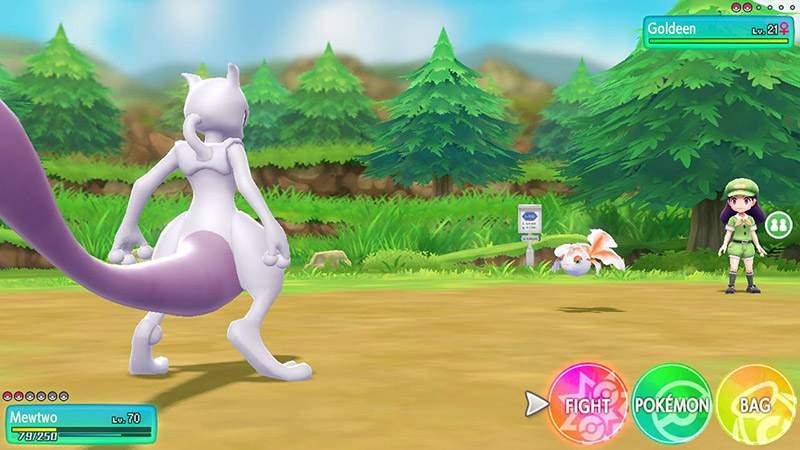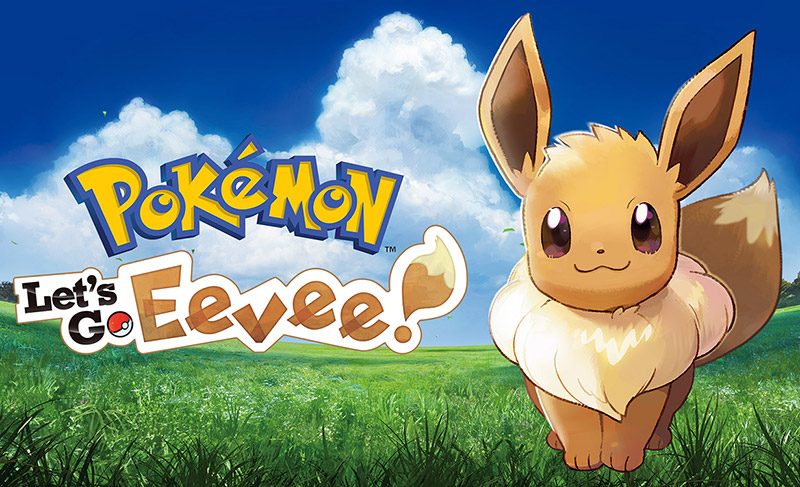If I’m being perfectly honest, one of the main reasons I’m excited about one day having kids is to play video games with them. I love my parents, but they were the kinds of well-meaning baby boomers who called every game system “A Nintendo” and every video game “Mario.” As I get older and closer to the age (gulp, eek, yikes, etc.) where children start to become a possibility, I think a lot about the experiences I’d like to share with my kid, and a first video game adventure is definitely on the list. That’s why I so heartily enjoyed Pokemon Let’s Go! Eevee and Pikachu: a Nintendo Switch remake of the very first game of the Pokemon franchise. Its tightrope act of balancing faithfully recreating its source material with new updates that help ease the game’s difficulty and broaden its reach make it a rare beast: a game that should appeal equally to the older generation that remembers the original and a new generation of first time players.
Okay—I promise that I won’t keep doing this because if I start every review of a Nintendo landmark franchise talking about how it holds special memories for me, it’ll start to look like I’m copy-and-pasting paragraphs from piece to piece. But Pokémon Yellow—the game that the Let’s Go! games are updating—DOES hold a prized place in my heart. It was actually my first video game. I was 5 years old and developed a mean nail-biting habit, and my wonderful parents thought that they could distract me with a Game Boy Color and a copy of Pokémon Yellow. Joke’s on them: Now I’m obsessed with video games, and I STILL bite my nails! But personal hygiene failures aside, I loved my first Pokémon game: iIt was a heady mix of adventure, action, and discovery that captured my 5-year-old attention and imagination. When I heard that a revamped version of the game was coming to the Switch, I knew I had to find out if the game resonated as much with 2019 me as it did with 1999 me.
Twenty years later? The nostalgia hound in me is fully sated. Pokémon: Let’s Go! Eevee and Pikachu (I played Eevee for this review’s purposes) are at their core a faithful recreation of the 1998 original, and from the opening moments of the game, I was immediately swept back into the world of Kanto, and its pocket monster inhabitants. The story is as simple as ever: You, a teenager, abandon your single mother and set off to capture wild animals and force them to fight each other as you traverse the world battling a national smuggling cabal of dangerous criminals. Plus: cute outfits for your Pokémon!
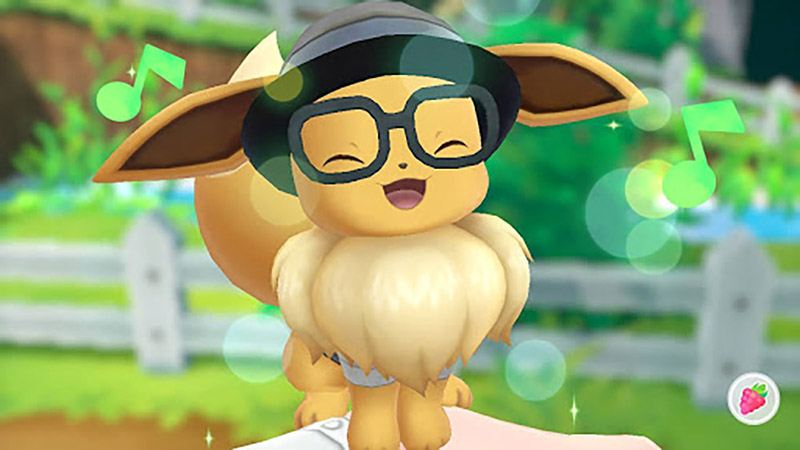
No, I tease. The story is one you’ll find familiar: No major changes from the original, and the usual suspects—the eight gyms, Team Rocket, your rival always one step ahead—all remain. The 3-D graphics and modern design are honestly emotionally resonant—perhaps this is the nostalgist in me talking, but walking into towns that I had only seen in pixelated Game Boy resolution now in 3-D and full color made me teary more than once.The original 151 Pokémon are all waiting throughout the game’s many locations for you, but the Pokémon you’ll care most about is the titular one—either Eevee or Pikachu. This is your “partner Pokémon,” your companion on your journey who stays on your head or shoulder the whole game through. The game handles this relationship in constantly surprising and entertaining ways—you can catch your Pokémon pulling a prank, or it might bat you on the nose to grab your attention, and you can pet and feed them from a pull up screen as well. Much like the original Pokémon Yellow, this breadth of interaction quickly bonds you to your partner Pokémon–I felt a pang of sadness anytime my Eevee fainted during a battle. Luckily, there are plenty of other Pokémon in the world who can help you out—and that’s where the first major new mechanic of Pokémon: Let’s Go! comes into play.
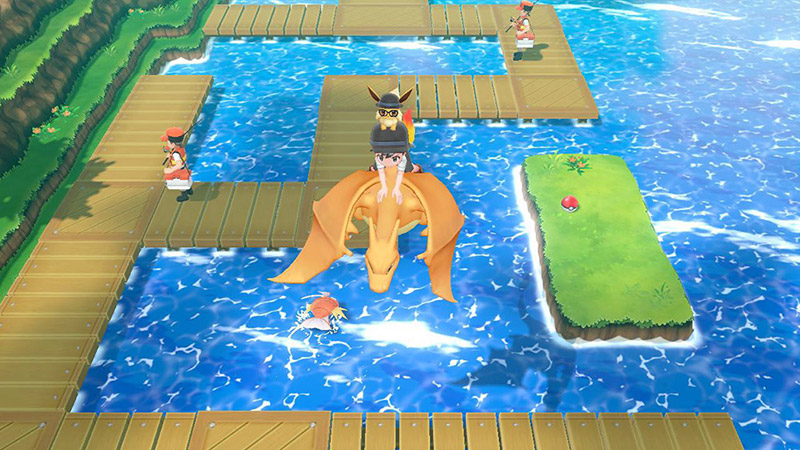
In the original Pokémon games the act of capturing a Pokémon was an arduous one. You first had to battle the Pokémon in the hopes of lowering its health, and then, when it was vulnerable, throw a Poké Ball at it, and hope that your target behaves long enough to be “caught.” It was a strategic battle—certain moves might make a Pokémon easier to catch, but you had to protect your own Pokémon as well, and if the wild Pokémon becomes over-injured, it could run away or faint, removing your chances of catching it altogether. In addition, all encounters were random, so you could spend hours running back and forth through a certain patch of grass, hoping that the Pokémon you were looking for might suddenly decide to show up.
Let’s Go!, seemingly in the interest of appealing to a younger, less patient (read: sociopathic) generation, has revamped this system in a way that, while jarring at first if you played the original games, ultimately makes a ton of sense. As you walk through the world of the game, you can see the wild Pokémon walking around you as well. Bump into one, and you initiate a new scene—but instead of battling the wild Pokémon, Let’s Go! steals its system from its mobile game partner Pokémon Go, and asks you to play a catching mini game where you throw Poké Balls at your target, timing your throw perfectly to give yourself the best chance of catching it.
The system can be technically difficult—throws can be hard to carry out accurately, particularly when using the joy-cons or Poké Ball Plus controller—but the change is hugely successful. You can pick and choose your encounters, catching only the Pokémon you’re excited about instead of having to fight 45 boring randos in a row before getting what you’re looking for. The game grants your Pokémon experience for catching wild Pokémon, meaning that catching a lot of Pokémon actually becomes beneficial to your playthrough. And if you catch multiple Pokémon of the same type in a row, you’re granted extra combo points, raising the chance that you might encounter rare or “shiny” variant Pokémon. As I played, I found myself more invested in the catching mechanics than ever, skirting around certain Pokémon to purposely run into one I’d never seen before, or seeing how many Pidgeys I could catch in a row before I got bored (11). This system does decrease the overall difficulty of the game a bit, but its accessibility and smooth integration made it feel entirely natural by the end of my play-through.
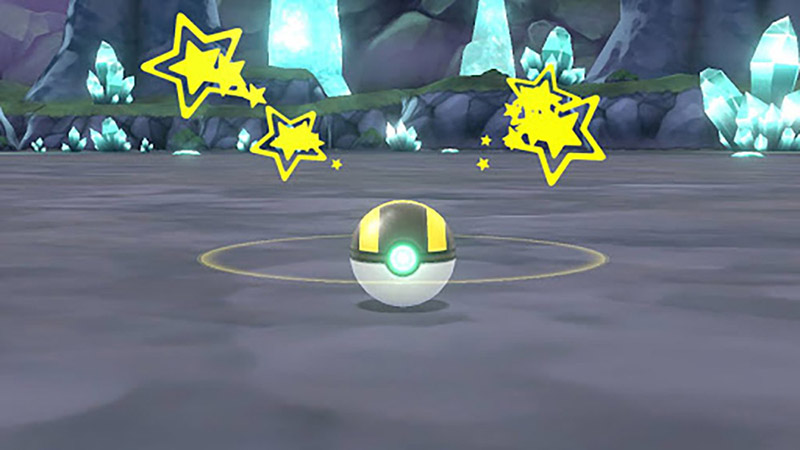
The other modernization in the game is its integration with Pokémon Go, the wildly popular mobile app released by Nintendo in 2016. It should come as no surprise, given that game’s clear influence on aspects of Let’s Go! (such as the name, for instance?), that Let’s Go! connects well to Pokémon Go. Trainers who were diligently catching Pokémon out in the real world can transfer those Pokémon into their Let’s Go! play-through and use them on the Switch. Beware though: Your transferred Pokémon’s level on the transfer drops significantly. I transferred over several of my strongest Pokémon Go catches, only to find they were pretty wimpy in the new game.
The games also find common ground in the use of a piece of fun hardware: the Poké Ball Plus controller. Available separately from the game, the controller is a small rubber Poké Ball that players can use both to control their movements in the game, and as a throwable Poké Ball to catch Pokémon. The controller is really satisfying; it’s surprisingly hefty for its size and well designed. Its game integration is not super-duper; its handling is imprecise and seeing as it’s literally a Poké Ball, its mapping to throwing Poké Balls in game is not as specific as you’d want it to be. The real fun, though, is what it can do out of game. Players can “take a Pokémon for a stroll,” which transfers an in-game Pokémon into the Poké Ball Plus, which you can take with you on your day. The system is a little—how shall I put it—conspicuous. The cries of the Pokémon from the ball would definitely call attention on a crowded train or subway platform, not that I would know from experience. But there is something so novel, so goofily futuristic, about carrying an actual Pokémon in an actual Poké ball in your actual pocket that the cool outweighed the awkward handily.
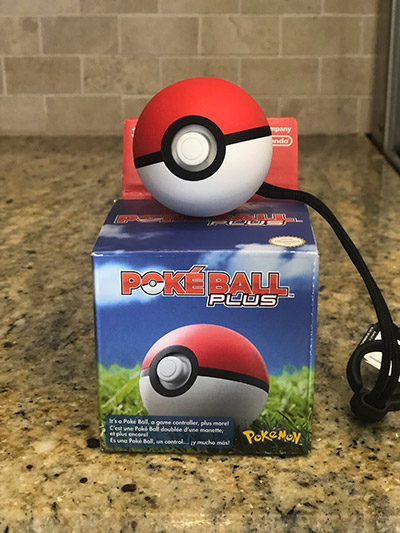
Pokémon: Let’s Go! Pikachu and Eevee are loving time capsules dusted off and given a fresh coat of paint and some new accessories along the way. They won’t change the world of gaming, but they’re not trying to. What they do set out to do is bring an indelible experience into the 21st century, and here they succeed wholeheartedly. What the game sacrifices in difficulty—in addition to the lack of wild battles, your starter Pokémon is powerful enough to, at times, singlehandedly beat the game—it makes up for in playability and simple, genuine enjoyment. The point of the Pokémon series was always that thrill of discovery, that new Pokémon, that new gym, that surprise evolution or new move learned. Pokémon: Let’s Go! hammers that feeling home, from the moment you meet your partner Pokémon to the moment you beat the Elite Four and add them to the Pokémon Hall of Fame. It’s not a perfect game by any means, but it is a wonderful experience that will please the Pokémon Old Guard and the New Generation alike. When I have a kid, I can totally see us playing the co-op version of this game together, sitting on the couch, taking over the Kanto region as a team. Now I just have to fall in love, get married, establish stable income, have a child, raise them, and introduce them to video games. Easy!
